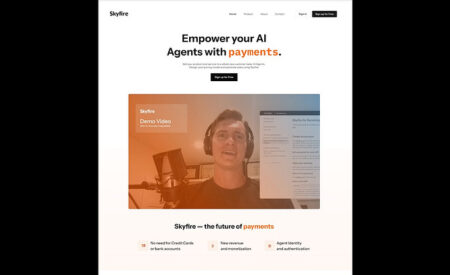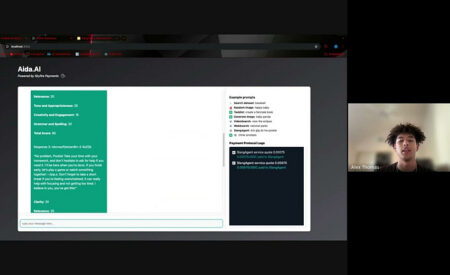The introduction of networked AI Agent collaboration
The recent proliferation of AI Agents are beginning to reshape how businesses and people interact with technology. Over the last year, agent capabilities have expanded as the speed and power of LLMs has grown. While agent behavior is still nascent, we’re on a cusp of a new “big bang.” As Agents specialize and learn to work together their capabilities will scale exponentially, creating a new universe of possibilities.
What is an AI Agent?
An AI agent is a software program designed to perform tasks autonomously. This is exciting because unlike regular software that requires specific instructions for every task, AI agents use artificial intelligence to independently determine actions based on available data.
Think of an AI agent as a digital robot, capable of making its own decisions, learning from its environment, and taking action to achieve objectives. Instead of needing to use a coding language to program this robot, you can talk to it in order to solve open ended problems.
AI Agents in Action
Here are a few ways you may have interacted with AI agents today:
-
Virtual Assistants: AI agents like Siri, Alexa, and Google Assistant help you set reminders, answer questions, and control smart home devices. They can connect to your contacts, your calendar and your smart home to perform everyday tasks automatically.
-
Customer Service: Chatbots on websites provide instant support, answering common questions and directing customers to the right resources. Chatbots have access to your order history and order details to provide targeted responses.
-
Autonomous Vehicles: Self-driving cars use AI agents to navigate roads, avoid obstacles, and make real-time decisions to ensure passenger safety.
Limitations of Current AI Agents
While AI agents are incredibly useful, they have their limitations:
-
Limited Understanding: Agents often have a restricted understanding of complex tasks or contexts, which can lead to errors or incomplete actions.
-
Isolated Functionality: Most AI agents work independently and can’t easily communicate or collaborate with other agents.
(We’re in a closed-garden ecosystem at the moment) -
Lack of Economics: With costs based on the complexity of the queries and CPU/GPU rates, running and maintaining AI agents can be expensive so developers can’t open them up for interaction and collaboration without a way of getting paid.
(The unit economics for training and inference of LLMs are still reserved for the deep-pocketed. The larger the number of parameters, the more accuracy the model achieves, but the costlier.)
The Power of Multi-Agent Collaboration
Many of these limitations can be solved through agents working together. We’re moving towards a world where a network of specialized AI agents can work together to complete complex tasks. A few early examples of agent frameworks that allow collaboration can be found here: CrewAI, AutoGen, Langgraph. Multi-agent collaboration involves a network of agents that can work together to autonomously break down problems and find the best way to assign tasks for completion. This is where multi-agent collaboration improves current limitations:
-
Enhanced Problem Solving: Multiple AI agents, with different abilities and specialized data models, can share information and expertise, tackling more complex problems than a single agent can handle alone.
-
Greater Efficiency: Smaller, fine-tuned models are less costly to run. Specialized agents plugged into these cheaper models are more efficient and through collaboration can distribute tasks among themselves, run them concurrently and complete them with less errors, faster and cheaper.
-
Improved Decision Making: Collaborative AI agents can cross-verify data and decisions, reducing the likelihood of errors and improving accuracy.
The Missing Infrastructure for Multi-Agent Collaboration
There are existing frameworks for developing agents and allowing basic collaboration. Today, these approaches require all agent participants to exist within the same infrastructure or application. I have yet to see examples of agents communicating and interoperating across frameworks or networks towards resolving a common task.
True multi-agent collaboration requires giving agents internet connectivity to collaborate across processes, servers and networks. For AI agents to collaborate effectively, we need an operational layer that allows both technical and economic collaboration between agents regardless of their developer’s technical choices or underlying infrastructure.
Creating this infrastructure is a massive undertaking and requires new systems and products to tackle the big opportunities across a spectrum of fundamental requirements including things like agent Identification and authentication, messaging and communication, payment processing and value exchange, conflict resolution and incentivization, registration and discoverability, and the list goes on…
Together, these components can act as an operational layer that enables efficient and effective collaboration across multiple AI agents connected to the internet. Early adopters of this layer will have a leg up on their competitors living in “walled gardens” and detached from the big bang of interconnected agents.
Stay tuned as we continue to develop these exciting technologies and bring the power of AI agents to life.
Craig


